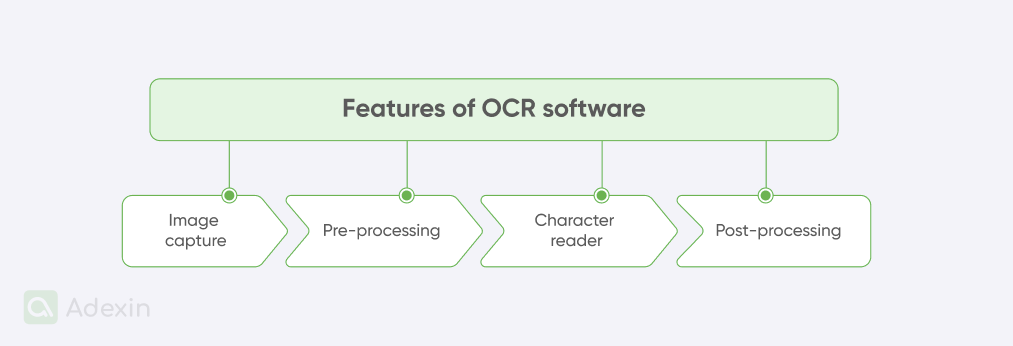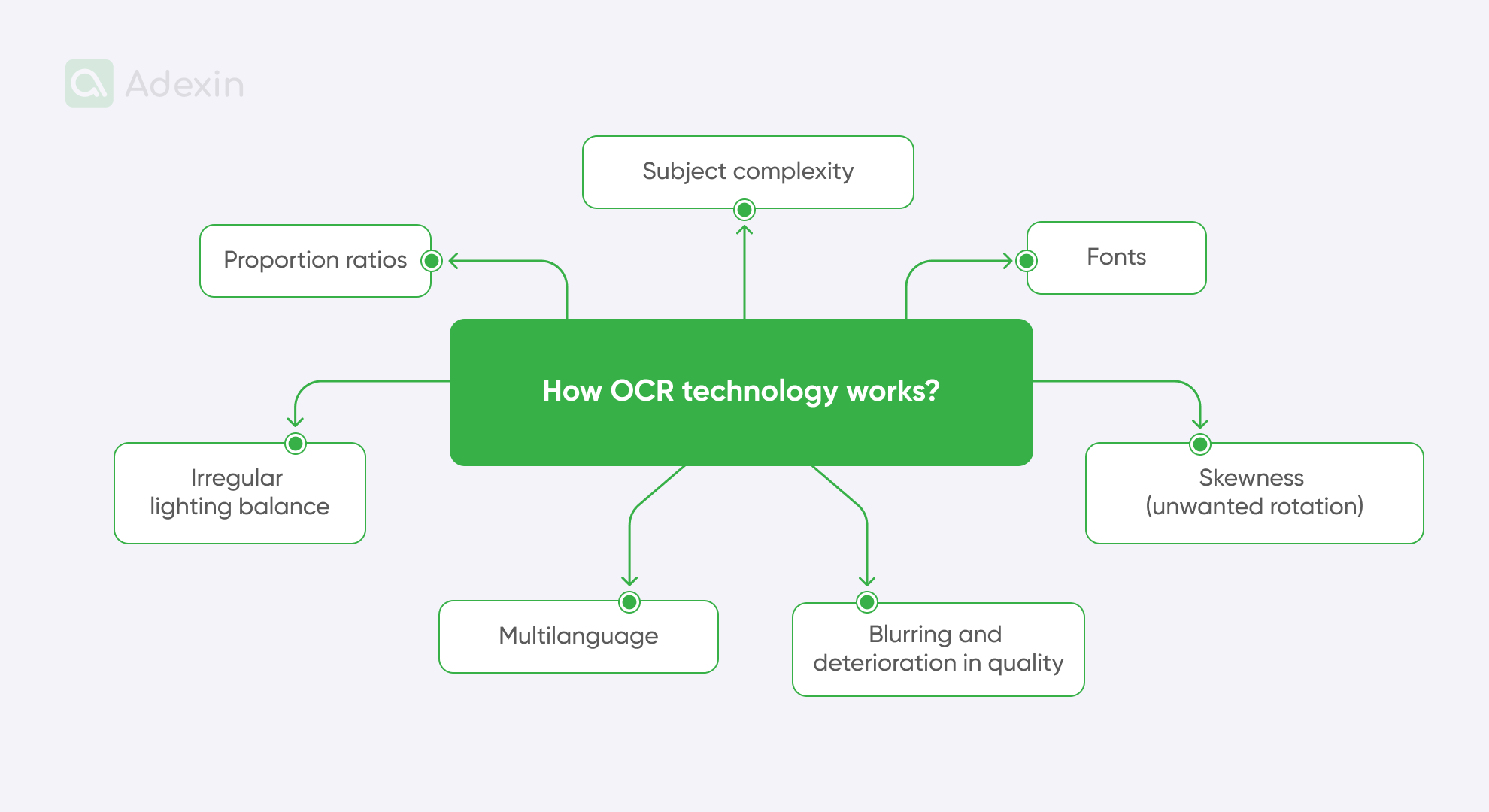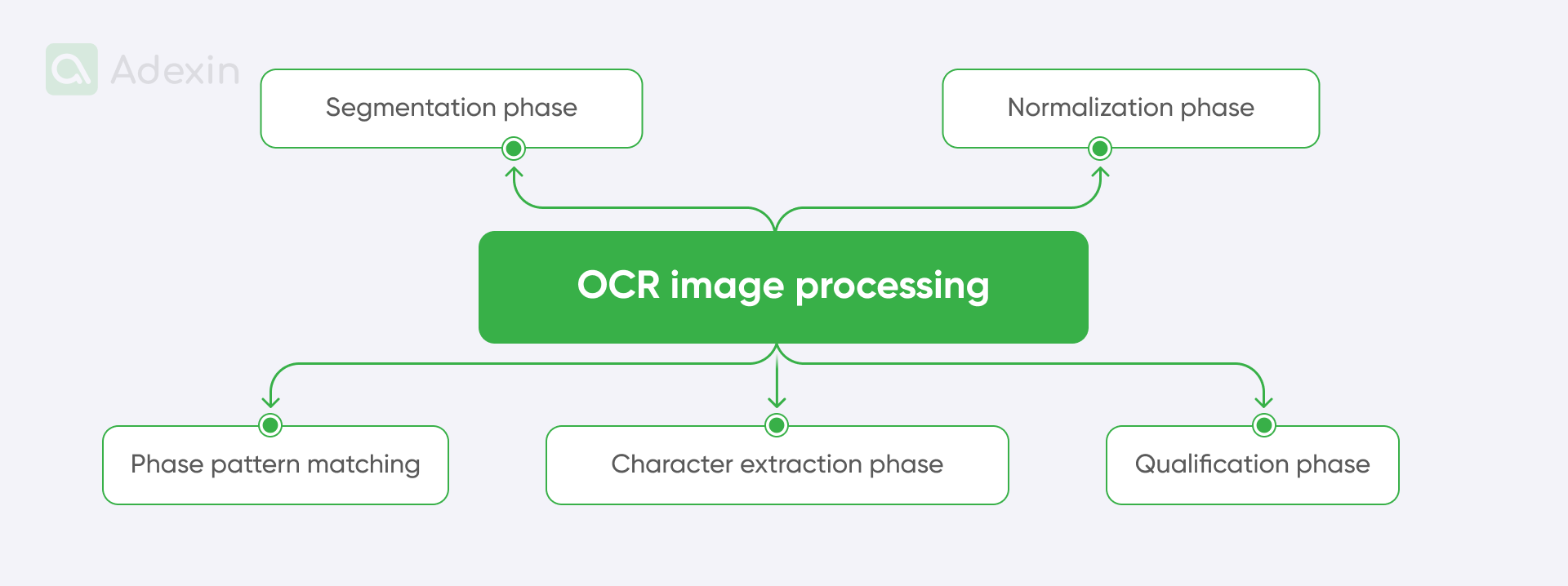Summary
Throughout this article, we catch up on optical recognition technology and OCR software in the transport sector. With all the possible benefits in mind, such as efficient document processing and data quality for transport companies, we highlight the importance of OCR technology. We’ll also share with you how it can help with data management using hardware and software components. All that to support better decision-making processes in day-to-day operations. Let's see how it works in a real environment and how practical applications can help small businesses in a friendly and accessible way.
What is an Optical Recognition System?
The transportation industry is growing so rapidly that there is no time to waste in processing documents or while performing day-to-day operations such as loading containers and trailers for transport. Everything must be done in a time-efficient and cost-effective way. Transportation companies are striving to reduce the manual work done by administration personnel and automate processes as much as possible.
Transport companies, such as shippers, carriers, just all kinds of forwarders in cargo and road transport, simply want to maintain data quality at the highest level and avoid discrepancies. They are implementing optical character recognition (OCR)-based systems to improve overall data processing efficiency and enhance decision-making.
Optical character recognition (OCR), widely known as text and object recognition, is a technology that retrieves and utilises data from scanned documents or camera pictures. It identifies characters in an object, helping transportation companies streamline their daily operations in driving Supply Chain Solution in the Industry 4.0.
OCR systems use a combination of hardware and software, with hardware devices such as optical scanners (mostly mobile) or specialized circuit boards capturing or reading text. Opposite the software handles the complex processing. [1]
What is Optical Character Recognition Software?
The aforementioned complex processing is all about managing, storing, and retrieving data but focuses mainly on the correct input. It is where OCR comes into play.
OCR software can incorporate modern models and algorithms that enable even more accurate implementation of advanced intelligent character recognition (ICR) techniques. Sounds a bit difficult but this includes nothing else as language and handwriting style identification. OCR can work on mobile and desktop devices, supporting transport operations with many features.

Here are the main features of OCR software:
Image capture
The scanner acts like a document camera, reading documents and converting them into binary data. OCR software then analyzes the scanned image and distinguishes light areas as background and dark areas as text.
Pre-processing
The software allows users to adjust slightly skewed scans to fix alignment problems before converting them to PDF. As part of this feature, users can eliminate digital image patches and smooth the layout of text images (set margins and even edges).
Character reader
Text detection and recognition are among the most important features of OCR software. It employs two main techniques. The first one is Pattern Matching, where an image is constructed from individual puzzles in a single piece of information. Second method is Feature Extraction, where the software divides glyphs into features such as lines, loops, and intersections.
Post-processing
After analyzing the scanned text, the system converts the extracted data into a digital file. At that point, OCR software systems go a step further, creating PDF files that display the original scanned document and the enhanced version in better quality.
How OCR technology works?
To better understand how OCR works, it is useful to first look at the challenges of OCR. These challenges are related to the different types of documents and objects that need to be processed by the hardware and software.

Subject complexity
Managing text recognition and converting it into images is challenging due to the presence of various human-made objects, such as buildings and symbols, which often resemble the structure of text. The major challenge is to distinguish text from non-text in complex scenes.
Irregular lighting balance
Images of natural environments can have irregular lighting and shadows, which degrade image quality. It makes OCR less accurate in detecting, segmenting, and recognizing text. Scanned images are preferred due to their uniform lighting. Skewness (unwanted rotation)
In contrast to desktop scanners, camera images can have skewed text. OCR struggles with highly skewed images. Several techniques, such as the projection profile and the Hough transform, help to correct skewness.
Blurring and deterioration in quality
Changing camera focus affects the sharpness of characters, which is crucial for OCR accuracy. Blurring occurs due to focus issues or movement during capture.
Proportion ratios
Text sizes and lengths vary, from short characters to long captions. Detecting text with different aspect ratios increases the computational complexity of the search process.
Fonts
Italic or alphabet fonts with different characters than Western fonts can overlap, making OCR segmentation difficult. Different fonts cause recognition difficulties, especially with multiple character classes.
Multilanguage
Language issues are also related to character recognition, such as Japanese, Chinese, and Arabic having complex characters, making OCR in multilingual environments challenging.
Knowing these challenges, we can better understand the requirements of optical recognition technology. OCR's core technology aspect is about obtaining the image captured by the mobile camera, illuminators, RFID antennas and tags, laser scanners, or wheel sensors. Along with the captured image, several stages of image processing are based on software algorithms.

Here are technology based aspects for OCR image processing:
Segmentation phase
In OCR, the segmentation phase isolates lines of text, words, and characters from images. It resembles the unfolding of a jigsaw puzzle: first, you get the lines, then the words from the lines, and finally, the individual characters.
Normalization phase
After segmentation, the characters are ready for feature extraction. Their size is changed to a standard size based on algorithms. This step helps organize the image data.
Character extraction phase
We extract key features from the characters or objects to create feature vectors. These vectors are crucial for classifiers to accurately identify and classify characters.
Qualification phase
OCR systems use pattern recognition to classify characters. It involves assigning characters to predefined classes based on their features. It can be compared to sorting items into different categories. The choice of classifier depends on factors such as available data and image complexity.
Phase pattern matching
This is a simple method in which characters are matched against stored templates. It is similar to comparing shapes and pixels to find similarities between the input character and known templates. It is one of the techniques being investigated by OCR researchers. [2]
Along with OCR, you can implement various solutions to improve your document management within an organization. Many companies already benefit from such solutions by using custom software development services.
How OCR automation helps in Transportation?
OCR is not only about recognizing text but also capturing images. It is used worldwide for the recognition and identification of equipment markings. It has already found its implementation in the transportation industry. Transportation companies have been using OCR to streamline their Supply Chain operations for several years. Here is where OCR is used:
Intermodal transportation – image recognition for containers and loading in railway.
Freight transportation – load recognition for truck semi-trailers and containers (pallets distribution within containers).
Transport documentation – support for digitizing documents flow and swift paper printed documents exchange and sharing across departments and between stockholders.
Freight inspection – controlling the quality of shipment with image recognition.
Truck recognition – recognizing trucks at the entrance and while they're approaching warehouse docks for unloading.
Use cases of OCR systems in Logistics and Transportation
OCR has already been applied to transportation infrastructures. Using the Optical Character Recognition system in freight transportation for intermodal, its implementation in 2021 in the Malmö intermodal rail-road terminal, a gateway terminal between Sweden and Europe, is a noteworthy example.
OCR solutions were applied in a port terminal where containers are usually more standardized to identify every Loading Unit (LU) entering and leaving the terminal by reading the LU ID. [3]
What are the benefits of OCR in Transportation for intermodal?
Fast transfer from trucks to trains or from trains to trucks.
More efficient management of storage areas.
Avoiding container damage during loading/unloading.
Standardized and fast recognition of freight unit types (wagons, trailers, vehicle identification, shipment technical characteristics – serial number).
Simple OCR function for small businesses in Logistics
OCR isn't only a solution for large companies. Small logistics and transportation companies may need it the same way as larger ones. It's all about document processing. Logistics companies can use OCR to digitize documents daily without compromising overall performance.
Here are OCR advantages small businesses:
Small logistics teams can operate more effectively.
Saving time and costs for managing paper archives.
Truck drivers can work faster by scanning documents from their mobile devices.
Unloading personnel can benefit from quick consignment recognition and allocate it faster from truck trailers into storage warehouses.
What is the Best Optical Character Recognition Software?
The best OCR software should contain several features that allow seamless transportation operations. It should also be easy to implement, so the project should be implemented only by a company with a mature methodology and a proven track record of implementing transportation solutions.
Here are the core features of OCR software:
Pattern recognition – necessary for various document detection and shapes, such as vehicles, containers, and trailers.
Adjustable selection criteria – built-in function for selecting documents for scanning or outdoor/indoor areas.
Search features – instant access to all templates and shape examples to improve navigation.
Data collection – data collection for improving image matching.
Document Input – unlimited recognition for various document types through captured images.
Editing Tools – the possibility to edit data on the document once captured.
Image Processing – functions dedicated to recognizing transportation infrastructure.
OCR Accuracy Enhancement – image improvement based on collected data.
Security Features – to secure document flow across various departments (built-in access passwords).
Versatile capture – no matter how the document is placed in front of the camera, it should be captured the same way as others.
What are the benefits of OCR software?
Here are the main benefits that OCR software delivers to the transportation industry:
Cost saving
Cost-saving is highly important in the transportation and logistics sector. OCR technology reduces costs by eliminating the need for manual data entry and document handling, thus influencing error-less work regarding container management.
Removing paperwork
Requesting duplicates of printed copies is a significant problem in every organization. OCR reduces the risk of document loss or damage by removing paperwork and accelerates the flow of information within the logistics chain, reducing document losses and employee frustration.
Time and effort savings
OCR technology dramatically reduces the time and effort required for manual tasks such as data entry, archiving documents, and data extraction. Employees can simply focus on higher-value tasks rather than searching for documents or requesting duplicates from stakeholders.
Enhanced collaboration
OCR facilitates seamless collaboration among various stakeholders in the supply chain, helping transportation companies support the entire logistics ecosystem, including shippers, carriers, customs authorities, and customers, by supplying everyone with digital documents and image processing.
Speed and efficiency
OCR enables rapid data extraction and verification, reducing document processing times in transportation from hours to minutes or even seconds.
Let's summarize
Looking at the wide perspective of OCR for transportation, we see that it can offer greater automation while reducing the need for a significant workforce. This all boils down to lower operational costs and a strong perspective for a fast return on investment (ROI).
Adexin specializes in implementing solutions for document digitizing. We have a proven track record of providing various solutions for the transportation industry. Our team of experts has supported the transportation and logistics sector by delivering projects within the required time frame and ensuring the highest customer satisfaction. Contact us now, and let's see together what we can do for your business.
References:
[1] Retrieved from: https://unstats.un.org/unsd/demographic/sources/census/wphc/dataCapture/docs/Data-Capture_ch06-ABS.pdf
[2] Retrieved from: https://dergipark.org.tr/tr/download/article-file/236939
[3] Retrieved from: http://www.diva-portal.org/smash/get/diva2:1456162/FULLTEXT01.pdf
